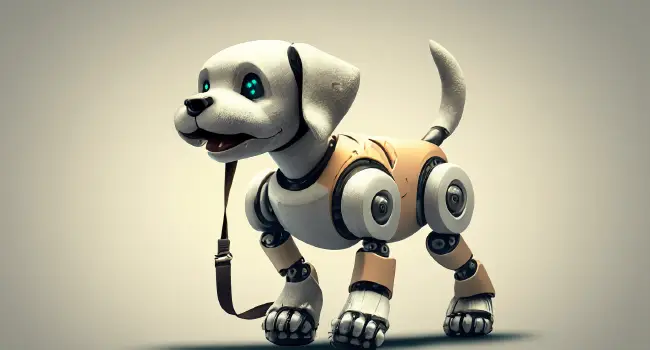Robotic Pets

In recent years, technology has been advancing rapidly, and we have seen some incredible developments, including the creation of robot pets. These mechanical creatures have the potential to be much more than just toys; they can provide companionship and even offer therapeutic benefits to their owners.
The History of Robot Pets
The concept of robot pets can be traced back to the early 1990s when Sony released its first robotic dog, AIBO. AIBO quickly gained popularity and became a cultural icon, appearing in movies, music videos, and even on TV shows. However, despite its popularity, AIBO was not widely available, and it was only produced for a few years.
Since then, many companies have tried to create the next big thing in robot pets, with varying degrees of success. Some have focused on making robotic dogs and cats that can move and behave like their real-life counterparts, while others have created more imaginative designs, such as robots that look like dragons or dinosaurs.
Capabilities of Robot Pets
One of the main advantages of robot pets is that they can offer companionship to those who may not be able to have a real pet, perhaps due to allergies or living in a space that does not allow animals. Robot pets can be programmed to mimic the behavior of real animals, such as wagging their tails or meowing, and can even recognize their owners and respond to their voice commands.
Robot pets can also be beneficial for people who are elderly or have disabilities. They can provide emotional support, reduce stress and anxiety, and even encourage physical activity by encouraging their owners to play and interact with them.
In addition to their therapeutic benefits, robot pets can also be used in educational and research settings. They can be used to teach children about robotics and programming and to study human-animal interactions.
Potential Drawbacks of Robot Pets
Despite their many benefits, there are some potential drawbacks to robot pets. For one, they lack the warmth and emotional connection that comes with owning a real pet. While they may be able to mimic some of the behaviors of real animals, they do not have the same capacity for love and affection.
Another concern is that robot pets could be used as a replacement for real pets, leading to a decline in pet ownership. This could have negative consequences for the animal welfare industry, as well as for people's mental and physical health.
As technology continues to advance, it will be interesting to see what new developments are made in the world of robot pets.
Robotic Pet Articles and Web Sites
-
I search the internet daily for new articles from around the world that interest me or I think will interest you. My hope is that it saves you time or helps students with their assignments. Listed by most recent first. Hit NEXT button for more articles
-
Why Robopets Will Never Be Real Enough from Gizmodo
-
PC Mag posted Next-Gen Robots Will Be...Soft and Cuddly?
-
Robotic Guide Dog video
-
Digital Trends posted Your next therapy dog could be a biomimetic robot
-
A video of SnuggleBot, a cuddly robot companion
-
Robotic pets used to remedy loneliness in nursing homes across Alabama - valleycentral.com
-
Robot dogs are the weirdest package delivery system we’ve seen - The Verge
-
Meet Miko — India's First Companion Robot for kids - Youtube (1:34) - 02/17
-
Robot pets offer real comfort - CNN - 10/16
-
Learn to Code with COJI and Emojis - Youtube (:39) - 07/16
-
Robot learning companion offers custom-tailored tutoring - NSF - 03/16
-
Joy for All Companion Pet Cat review - Youtube (1:47) - 01/16
-
Meet CHiP: The World's First Lovable Robot Dog - Youtube (2:24) - 01/16
-
MiPosaur Robot Dinosaur - Youtube (:30) - 05/15
-
MiP - Youtube (:30) - 06/14
-
Emotional robot pets - Science Daily - 09/10
-
10 Robotic Pets That Deserve to Live in the White House - io9 - 11/08
-
What's the point of robot pets? - Dan's Data - 08/08
-
Move Over, Rover: Robotic Pet Can Be Best Friend - Live Science - 01/06
-
Robotic Pet Web Sites and Blogs
-
List of robotic dogs - Wikipedia
-
PARO - Therapeutic robotic baby seal from Japan
-
PLEO - Autonomous robotic pet dinosaur
-
Tekno the Robotic Puppy - Shows inner workings of a robot pet
-
WowWee - Robot pets (retail site)

